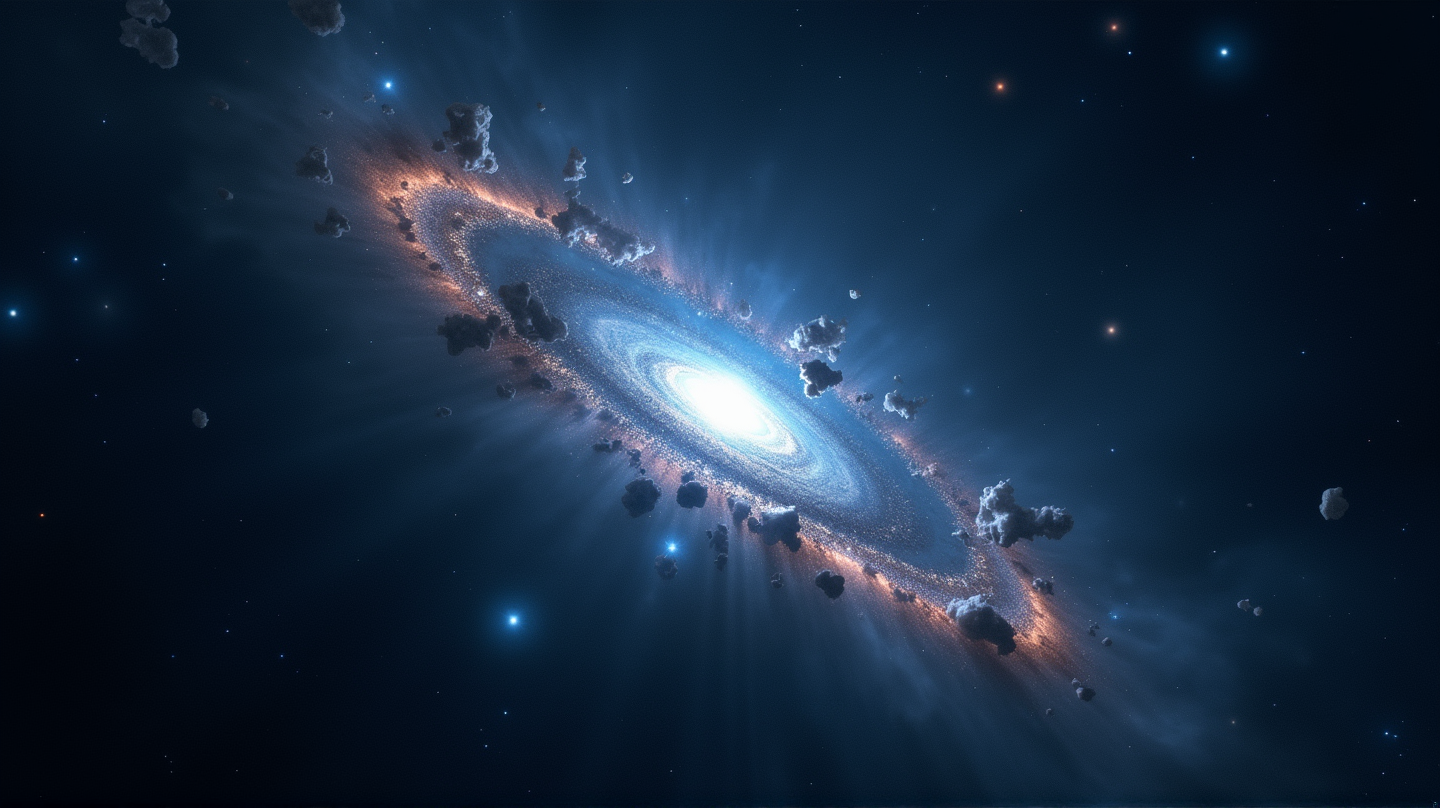On July 1, 2025, astronomers at the Asteroid Terrestrial-impact Last Alert System (ATLAS) identified a mysterious visitor in our Solar System: 3I/ATLAS, an interstellar comet on an escape trajectory. Fascination quickly turned into perplexity as telescopic eyes worldwide scrutinized this cosmic traveler. What makes 3I/ATLAS stand out isn’t just its status as the third interstellar object we’ve observed but its strange chemical composition, potentially holding clues to its journey through the galaxy.
The Galactic Cosmic Ray Puzzle
Spectra analysis of 3I/ATLAS has puzzled scientists. A study, detailed in a yet-to-be-peer-reviewed paper, suggests cosmic rays might be rewriting the comet’s script. “The ratio measured for the amount of CO₂ gas relative to H₂O is among the highest ever observed in a solar system comet,” NASA stated. This peculiarity might indicate 3I/ATLAS was exposed to galactic cosmic rays—streams of high-energy radiation from beyond our solar confines—leading to its unusual composition.
An Interstellar Time Capsule?
Originally, hopes were high that 3I/ATLAS could be a time capsule from a distant star system, offering insights into environments light-years away. As Tom Statler, NASA’s lead scientist for Solar System small bodies, aptly put it, “It’s a comet.” Even if it possesses some peculiar traits, it’s far from being an alien artifact.
Yet, belief that this comet carried original material from another world was overshadowed by evidence suggesting galactic cosmic rays altered its surface. This revelation presents a bittersweet reality: while we might be deprived of pristine interstellar material, the journey itself holds scientific intrigue.
Cosmic Rays: Shaping the Journey
The researchers indicate that galactic cosmic rays might convert carbon monoxide into carbon dioxide over billions of years. This process could create an irradiated crust, accounting for the high CO₂ levels. If true, it means 3I/ATLAS is less of a pristine messenger from an alien world and more a lab specimen for cosmic-ray processing.
“The current outgassing samples the GCR-processed zone,” explains the study, adding layers to our understanding of cosmic journeys and eroding any illusion of simplistic narrative surrounding interstellar comets.
The Road Ahead: Perihelion and Beyond
Hope remains pinned on forthcoming observations as 3I/ATLAS approaches perihelion, the closest point to the Sun. There’s anticipation that pristine material might emerge, albeit considered unlikely by current estimates.
As telescopes worldwide continue their vigil, the study posted on preprint server arXiv marks a step forward but leaves many questions unanswered. With more eyes trained on this cosmic wanderer, astronomers remain eager, yet cautious, about the revelations it has yet to unfurl about our distant cosmic neighbors.
According to IFLScience, these discoveries will redefine how we interpret interstellar visitors and their storied paths.
